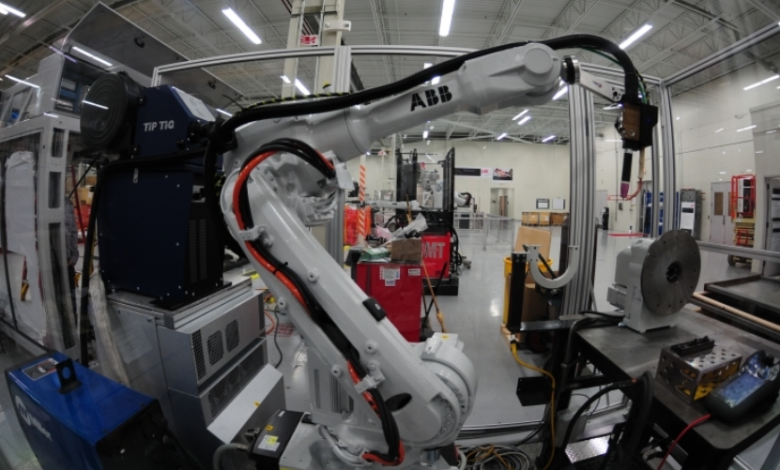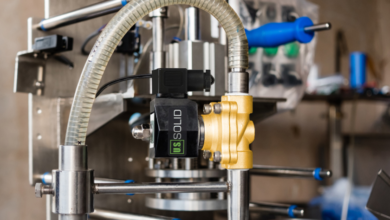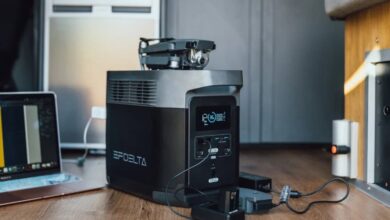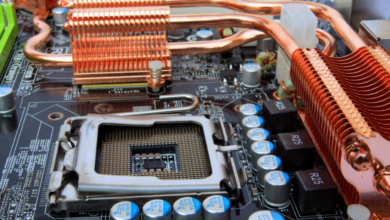Top 7 Best Robotic Welding Systems Manufacturer

Automation is transforming how products are made, and robotic welding is at the forefront of this change. These systems deliver more accurate welds, work faster, and manage larger production volumes. Choosing a reliable manufacturer is important for businesses adopting robotic welding systems.
A good manufacturer provides machines that fit your production needs and offers strong support and updates. This guide highlights seven leading manufacturers worldwide, recognized for their expertise and contributions to robotic welding technology.
Why Choosing the Right Manufacturer Matters
Selecting the right robotic welding system manufacturer ensures smooth, reliable, and successful operations.
Integration and Compatibility
A good manufacturer makes sure the machine, software, and support all work well together. This prevents problems, makes fixing issues easier, and keeps everything running smoothly.
Quality and Reliability
Experienced manufacturers provide strong, high-quality machines. This ensures consistent welds, less downtime, and lower overall costs.
Support and Maintenance
Manufacturers with good support can provide help when needed, replacement parts, and regular maintenance. This reduces interruptions and helps your machines last longer.
Return on Investment (ROI)
Buying from a trusted manufacturer usually pays off quickly. Faster production, lower labor costs, and better welds save money over time.
Industry Expertise
Manufacturers with experience know the industry well and can offer solutions that fit your specific production needs.
Choosing the right manufacturer ensures a reliable, efficient, and well-supported robotic welding system that keeps operations running smoothly.
See also: Vibe Coding and Developer Wellbeing: A New Approach to Tech Culture
Top 7 Best Robotic Welding Systems Manufacturers
Here are seven leading robotic welding system manufacturers, recognized for their innovation, reliability, and global presence:
Top 1: TM Robots
TM Robotics specializes in collaborative robots (cobots) for welding. Their systems are flexible and easy to integrate, making them ideal for small to medium-sized businesses.
Key Features
- AI-powered cobots for optimized welding.
- Flexible and easy to integrate into existing workflows.
- Designed for small to medium-sized businesses.
Applications: Ideal for SMEs looking to improve productivity through automation.
Top 2: FANUC
FANUC is a global leader in industrial automation, best known for its ARC Mate series of robotic welding systems.
Key Features:
- Payloads from 7 kg to 35 kg, with reaches of up to 2.2 meters.
- Slim arm and hollow wrist for easy access in tight spaces.
- Supports MIG, TIG, laser welding, and plasma cutting.
- Compatible with various welding power supplies.
Applications: Widely used in automotive manufacturing, especially for welding parts like seats and axles.
Top 3: ABB Robotics
ABB offers high-performance robotic welding systems with user-friendly interfaces.
Key Features:
- Modular, standardized robot cells for cost-effective deployment.
- Seamless integration of equipment and software.
- Supports arc, spot, and laser welding.
Applications: Common in automotive and heavy industries to improve productivity and weld quality.
Top 4: KUKA Robotics
KUKA makes flexible robotic arms that can perform many different welding tasks efficiently.
Key Features:
- High path accuracy and repeatability for consistent welds.
- Preconfigured arc welding robot cells for quick setup.
- Handles complex, high-precision tasks.
Applications: Ideal for industries needing customized solutions, including automotive and aerospace.
Top 5: Yaskawa Motoman
Yaskawa’s Motoman series offers compact, efficient robotic welding solutions.
Key Features:
- High-performance welding robots with fully integrated workcells.
- Designed to improve weld quality and reduce cycle times.
- Supports MIG, TIG, laser, and plasma welding.
Applications: Widely used in the automotive and metal fabrication industries.
Top 6: Panasonic Welding Systems
Panasonic provides advanced welding robots with AI and digital controls.
Key Features
- AI integration for optimized welding.
- Produces high-quality welds on various materials.
- Advanced digital controls for precise operations.
Applications: Suitable for industries requiring consistent, high-quality welds.
Top 7: Lincoln Electric
Lincoln Electric combines welding expertise with robotic automation in integrated systems.
Key Features:
- Standard robotic welding cells are designed for simplicity and efficiency.
- Integrated with welding power sources for seamless operation.
- Supports MIG and TIG welding processes.
Applications: Common in manufacturing environments needing reliable and efficient welding solutions.
These seven manufacturers lead the field in robotic welding technology, providing solutions for a wide range of industrial applications. Their innovations in automation, precision, and efficiency continue to drive improvements in manufacturing worldwide.
Key Factors to Consider When Selecting a Manufacturer
- Integrated Vision and AI – Modern robotic welding systems often have cameras and AI, allowing the robot to “see” its surroundings. This helps it adjust to part variations, detect defects, and perform tasks like shape matching or reading barcodes accurately.
- Ease of Programming and Operation – Choosing robots that are simple to program and operate, using intuitive interfaces like visual flowcharts or “teach-by-hand” methods. It reduces the need for advanced coding skills, shortens training time, and helps operators quickly adapt to new tasks.
- Payload Capacity and Reach – Robots come in different sizes for welding tasks. Light-duty robots handle small parts, medium-duty robots work for general welding, and heavy-duty robots handle large or bulky components. Selecting a robot with the appropriate payload and safe welding operations.
- Safety and Compliance – Robots must comply with international safety standards like ISO 10218 and ISO/TS 15066. Proper safety features allow robots and humans to work side by side, reducing the need for fences or barriers and ensuring a safe working environment.
- Integration with Welding Systems – A good robotic welding system should easily connect to existing welding machines, power sources, and software. This integration simplifies setup, reduces downtime, and ensures the robot operates efficiently within your production line.
- Global Presence and Support – Choose a manufacturer with an international network of offices, service centers, and technical support. This ensures fast access to maintenance, spare parts, updates, and troubleshooting, minimizing production delays.
Considering all these factors helps you select a robotic welding system that is reliable, efficient, and well-suited to your specific manufacturing requirements.
The Future of Robotic Welding Systems Manufacturers
Robotic welding system manufacturers are evolving rapidly, driven by advances in AI, collaborative robotics, and smart automation technologies. These developments are shaping the next generation of welding solutions for a wide range of industries.
AI and Machine Learning Integration
Manufacturers are embedding AI and machine learning into welding robots. This allows robots to adjust welding parameters in real time, detect defects, and maintain consistent weld quality with minimal human intervention.
Collaborative Robots (Cobots)
Cobots safely work alongside humans, offering flexible, easy-to-deploy solutions that can reduce the need for safety barriers in manufacturing.
Industry Partnerships
Manufacturers are collaborating with welding technology companies to develop specialized, intelligent systems. These partnerships expand capabilities for industries such as automotive, shipbuilding, aerospace, and heavy machinery.
Smart and Connected Systems
These advanced robotic systems use digital twins, IoT, and predictive maintenance to track performance, streamline workflows, prevent downtime, and allow remote troubleshooting. They help manufacturers keep production efficient, reliable, and constantly improving.
Flexibility and Adaptability
Future robots are being designed to handle different materials, joint types, and production volumes. This adaptability ensures manufacturers can quickly respond to changing market demands and product designs.
The future of robotic welding system manufacturers is moving toward smarter, collaborative, and highly adaptable solutions. By leveraging AI, cobots, smart connectivity, and strategic partnerships, these manufacturers are paving the way for more efficient, flexible, and intelligent welding automation that meets the evolving needs of modern industries.




